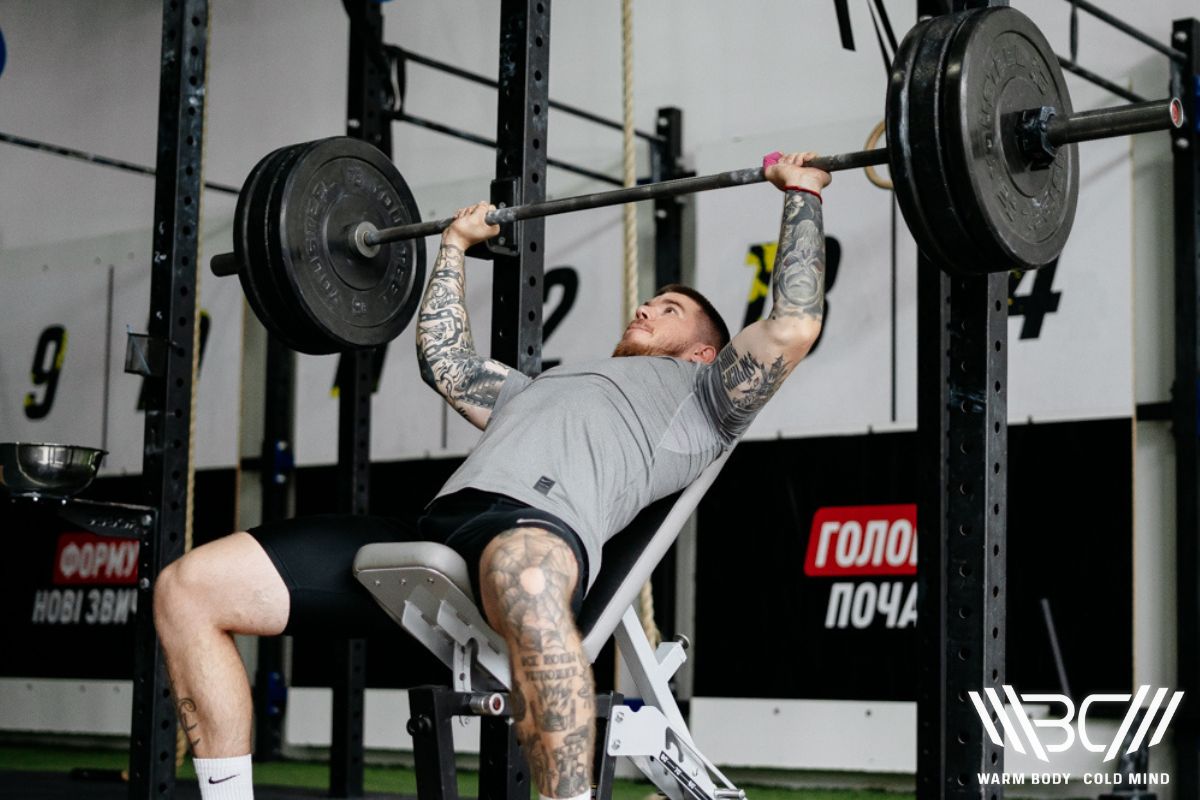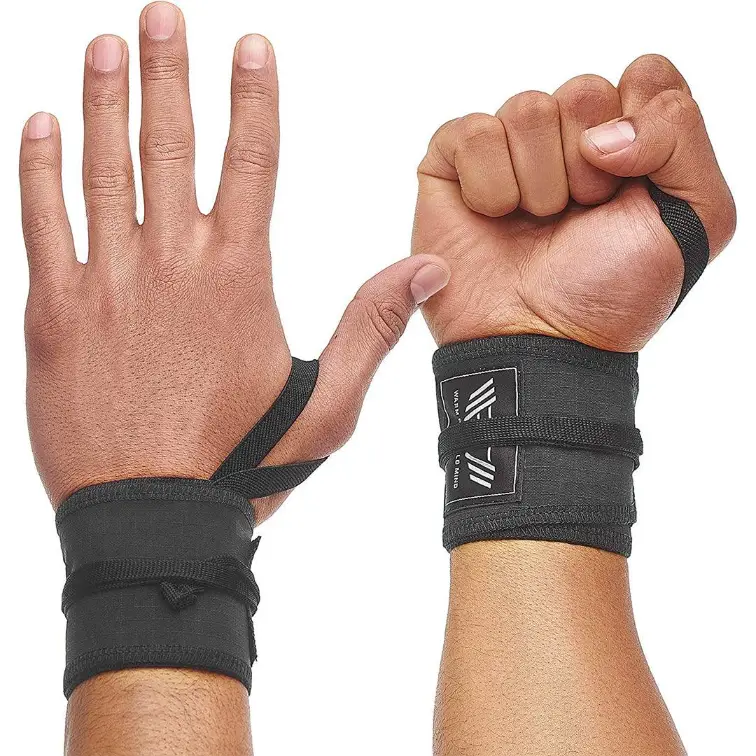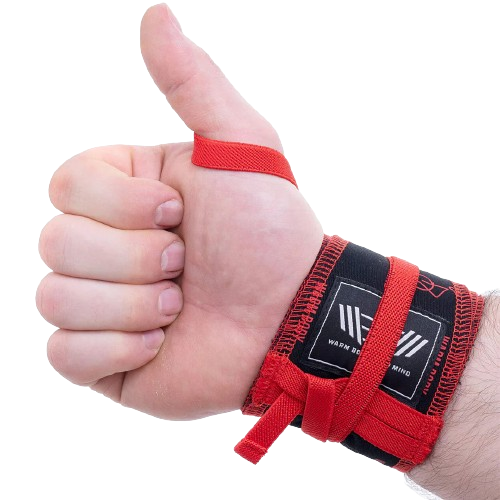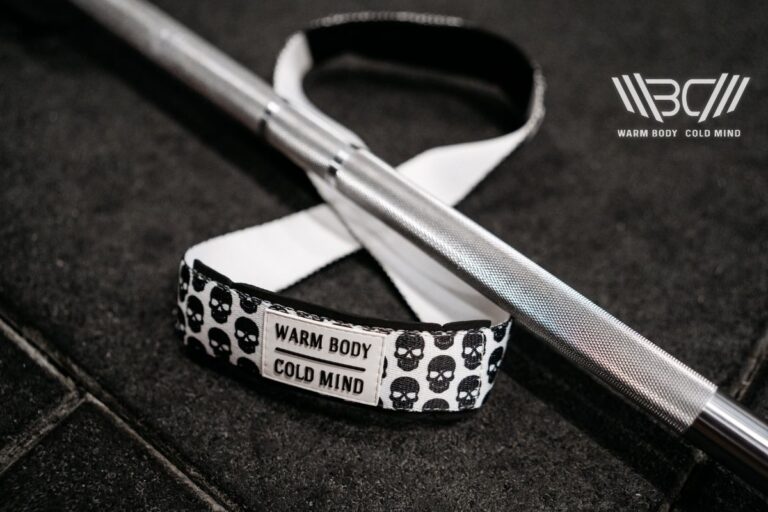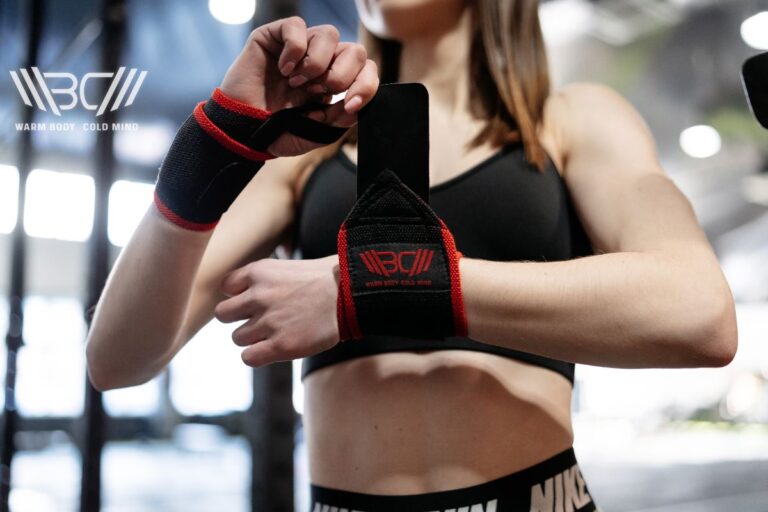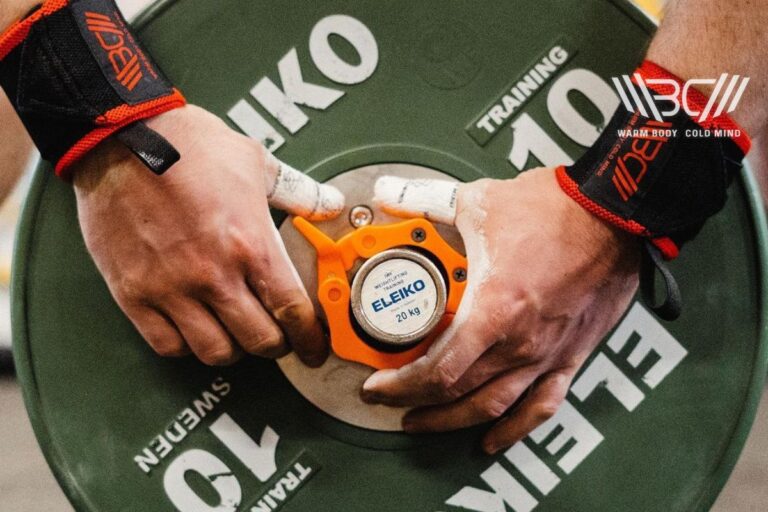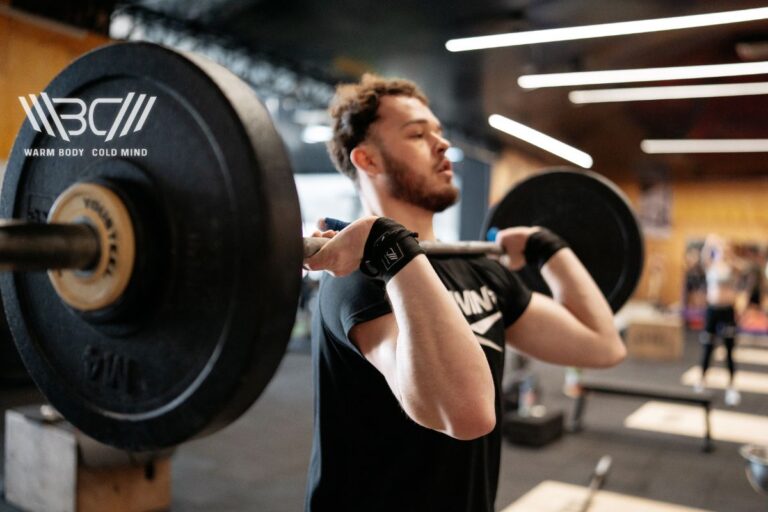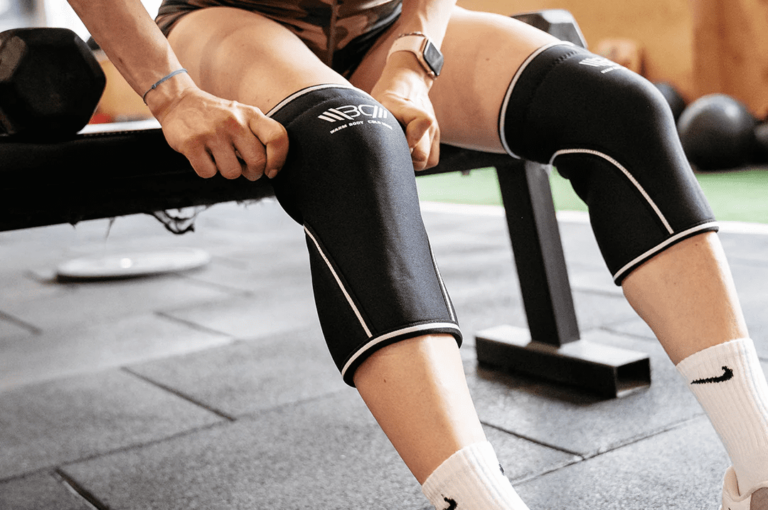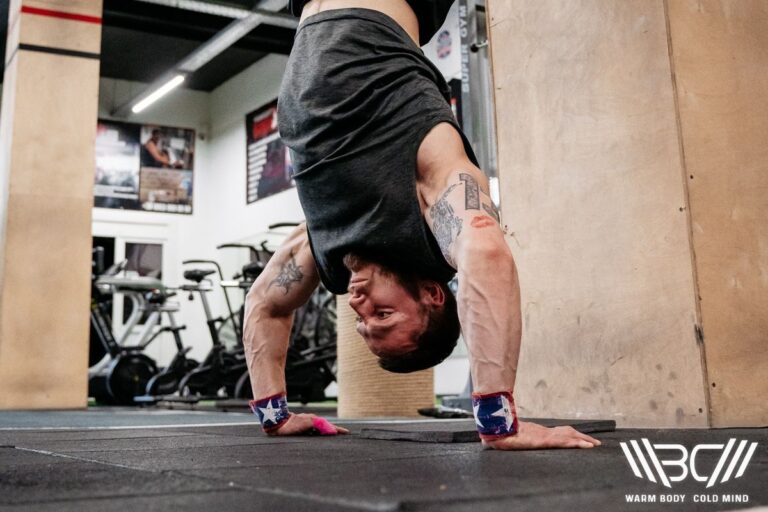Bench Press Wrist Pain: Concerning or Normal?
MEDICAL WARNING: This article is for informational purposes only and is not intended to be a substitute for professional medical advice. If you experience any health problems while exercising or using supplements, consult your doctor.
Have you recently experienced wrist pain when benching and are wondering about its possible causes? It could be something temporary, or a sign of underlying issues that need addressing.
In this article, we’ll discuss the different types of bench press wrist pain, common symptoms, and causes. Additionally, we’ll help you figure out if a home remedy will suffice and when a visit to the doctor is necessary.
Understanding Bench Press Wrist Pain – Pain is our body’s way of signaling something is wrong. Not all bench press wrist pain is bad, but it should be noted. Minor levels of pain are normal during high exercise pressure. However, if wrist pain from benching persists post-exercise, it’s important to diagnose it before it worsens.
How Your Wrist Works During Bench Presses?
Wrists play a crucial role during a bench press. Although benching draws from the strength of your upper body to push the barbell, the wrists are essentially the first line of contact. They do a lot of work in supporting the weight and balancing the barbell.
Wrists are more complex than most people realize. Each wrist is an intricate mechanism consisting of bones, ligaments, tendons, veins, and muscles working together. With so many small parts, lots of things can go wrong, causing the entire wrist structure to weaken. Understanding how our wrists work during benching is crucial for avoiding pain and preventing injury.
Bench Press Technique & The Wrist
During bench presses, the wrist should be in a neutral position at all times, with only the bottom of our palm and thumb supporting the barbell. The other four fingers should also be wrapped overhead to enclose the grip. The line between the wrists and elbows should be straight, allowing the forearms to take on the weight.
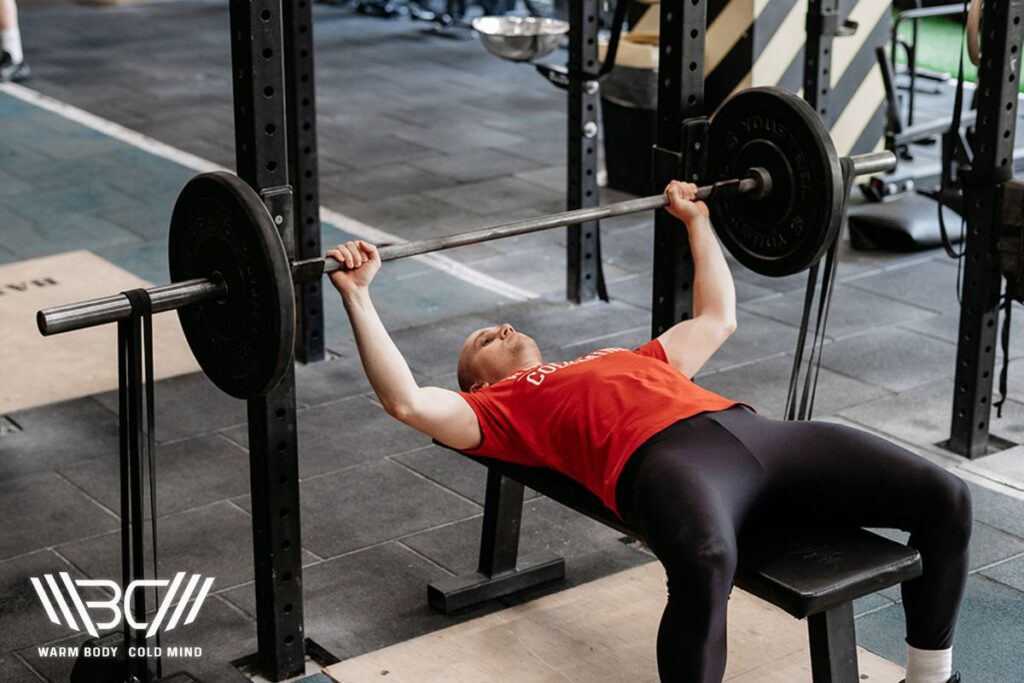
A slight backward bend, and we’re talking about 5-10 degrees, is allowed to better relieve some stress of the thumb and better balance the barbell. Excessive wrist extension (bending backward well past 5-10 degrees) during benching is a common beginner mistake that good coaches should call out and correct immediately. The easiest way to avoid it is simply lowering the amount of weight.
Main Bench Press Pain Reasons
Pain during bench pressing can be attributed to various factors, both health and lifestyle-related. Here are some of the main reasons for wrist pain from bench press:
1. Push-Based Exercise
At its core, the bench press is a push-based exercise. To gain exercise momentum, you have to push the weight up with your hands. When you bench press, your wrists are literally working against gravitational forces pulling down a heavy object.
This naturally puts pressure on them, which raises with intensity (higher weight) or volume (more sets/reps). If you’re working with high intensity relative to your current strength, eventually you’ll feel a sensation that, if intense enough, will register as pain. If the structural integrity of your wrist is compromised through injury or medical conditions, the pain will trigger even faster.

Cotton Weightlifting Wrist Wraps
Discover unparalleled wrist support with Warm Body Cold Mind cotton wrist wraps.
2. Overtraining
In our decades of experience, arguably the most common wrist injury from bench press attempts we see comes from overtraining to the point of damaging the joint. The most common mistakes include using weight beyond current strength levels or going for overbearing rep and set numbers. It’s important, especially for beginners, to train with realistic expectations relative to their current athletic level.
3. Lifestyle Causes
Not all wrist pain from benching is caused necessarily by the exercise itself. For example, we often find that recreational athletes and first-time benchers carry lifestyle-induced wrist issues that they’re unaware of, that just end up getting exposed when they hit a benching plateau.
Although the average job in the 21st century is way less physically demanding than ever before in human history, wrist issues were specifically an “artist’s disease” in the past. Think of a painter stringing along the brush for hours on end or a violinist making thousands of bow strokes per hour.
Now let’s look at modern life. If you work on a computer, play video games, and surf the web, you’re likely doing tens of thousands of clicks per day. Add to that playing the piano, doing gymnastics, rock climbing, and other wrist-intensive activities, and we have ourselves a wrist issue epidemic.
Most of us can’t avoid the computer or phone due to work, but what everyone should be doing is making sure our setup is ergonomic. For our hands, this means a relaxed upper body, elbows at a 90-degree angle, and wrists straight. Also, avoiding mindless scrolling and taking time to do wrist stretches is a must.
4. Injury & Health Conditions
Obviously, a common reason your wrist hurts when benching is an unaddressed medical condition, be it an outstanding injury or chronic health concern. More on this in the upcoming segment.
Subscribe!
The latest reviews of must-have home gym training equipment, apparel, and supplements that will enhance your performance and bring you new results.
Main Symptoms And Diagnosis Of Wrist Pain During Bench Press
Regardless of its form, we’re all averse to feeling pain. That said, our body evolved to feel pain as a survival mechanism. The reason why it “hurts” both physically and emotionally is so that we can’t ignore it, it must draw our attention preferably immediately.
With that in mind, here are some of the main causes of wrist pain during bench press attempts and what they’re most likely telling us. Disclaimer: While these will give you a very accurate idea of what you’re dealing with, we do not endorse self-diagnosis unless you have a background in medicine or physical therapy.
1. Wrist Fracture
A bone fracture is the medically accurate term used for what we conversationally call a broken bone. Fractures typically result from a sudden and forceful impact on the bone. The pain associated with a bone fracture is a rapid, sharp, and relatively intense sensation that occurs immediately.
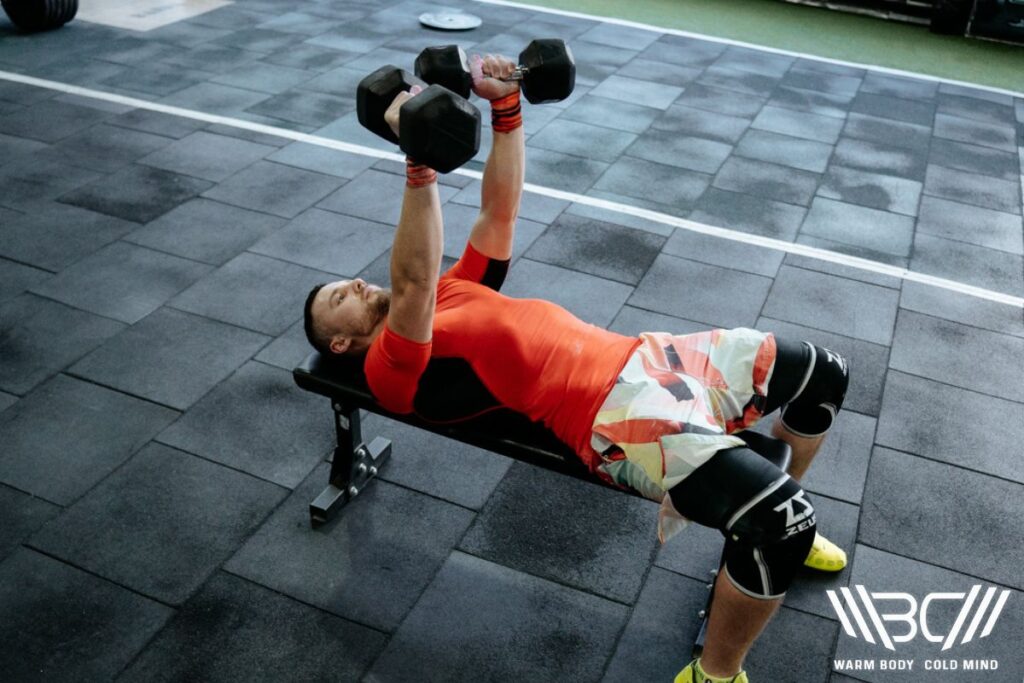
A serious fracture can be fairly obvious, with intense swelling, bruising, and visible misalignment even if it’s not exposed (i.e. the bone is not sticking out). A mild fracture may not have obvious visible signs, but applying any pressure to it will be quite painful and accompanied by a stinging or tingling sensation.
Correspondingly, a wrist fracture refers to the breaking of the wrist bone structure, accompanied by the same symptoms. The human hand has the highest concentration of co-dependant bones. In total, there are 27 bones in one hand. Eight of those, known as the carpal bones (from the Greek word karpós, meaning wrist), belong to the wrist.
These bones form the main structure of the wrist, connecting nerves, blood vessels, and tendons and bridging the gap between the forearms and fingers. Additionally, our forearms have two long bones — the Radius and Ulna — which connect the wrist to the elbow. Based on reports, the most common upper-body fracture occurs in the Distal radius, the portion of the Radius bone closest to the wrist.
Wrist fractures are a serious injury that demands medical attention. In other words, unless you’re trained and educated to deal with them, there are no advisable home remedies. Isolate your hand to prevent movement and see a doctor.
Therapy can take from several weeks to several months, depending on the severity, and exercising the fractured body part is not allowed. Although the bone is capable of fusing itself back together, severe cases might need surgery to streamline the process and prevent uneven healing.
2. Wrist Strain
Not to be confused with sprains (more on those in a second), strains are an injury that occurs when a muscle or tendon is forcefully overstretched beyond its capacity, resulting in tearing. Gym talk often calls them pulls or tears. Improper warmups and overexertion are some of the most common causes of exercise-related strains.
The muscles controlling your wrists actually start at the forearms, surrounding the Ulna and Radial bone. They’re divided into four categories: flexor muscles, extensor muscles, adductor muscles, and abductor muscles. They facilitate downward, upward, inward, and outward movement respectively, collectively allowing for 360-degree motion.
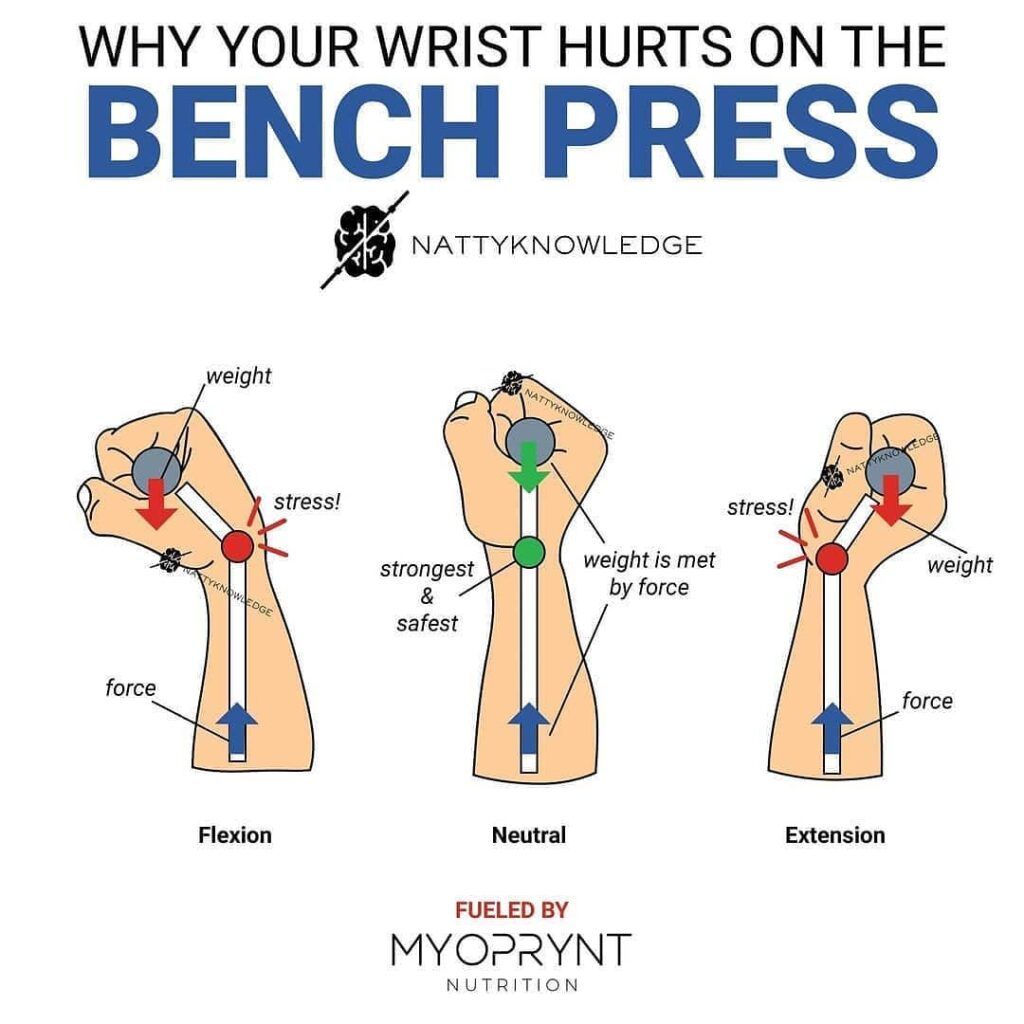
When the sprained joint (in this case the wrist) is activated, the pain can be quite intense. It may persist for several days to a few weeks as the muscle repairs itself. Other than pain, symptoms include swelling and bruising, as well as localized weakness and loss of motion.
Recommended treatment includes resting your hand for a period of 48-72 hours, keeping the joint in a neutral and elevated position, as well as protein-rich nutrition.
3. Wrist Sprain
A sprain occurs when a ligament is stretched beyond its natural limits, torn partially, or fully. Wrist sprains usually result from bending the wrist too far back, which is common when mishandling a barbell in benching. Symptoms include low-to-mild but persistent pain, soreness, and swelling. The wrist has four major ligaments: the palmar and dorsal radiocarpal ligaments and the ulnar and radial collateral ligaments.
Ligaments are collagen-based connective tissues that bridge bone gaps. Collagen is the most common protein our body produces. As such, our body can fairly self-sufficiently recover from stretched ligaments with proper rest and dieting.
However, partially or fully torn ligaments will require medical intervention 99 times out of 100, with fully torn ligaments often requiring surgery. Even though a mild sprain is fairly easy to home-treat, we still recommend avoiding self-diagnosis unless you’re a trained professional.
When Should You See A Doctor For Wrist Pain From Bench Press?
Unfortunately for all of us, we’re only human, made of flesh and bone. Even if we make all conscious effort to avoid it, our body structure does degrade over time. Not only that, but the body’s ability to repair itself also slows down with age. This is why there’s a clear correlation between age and wrist issues.
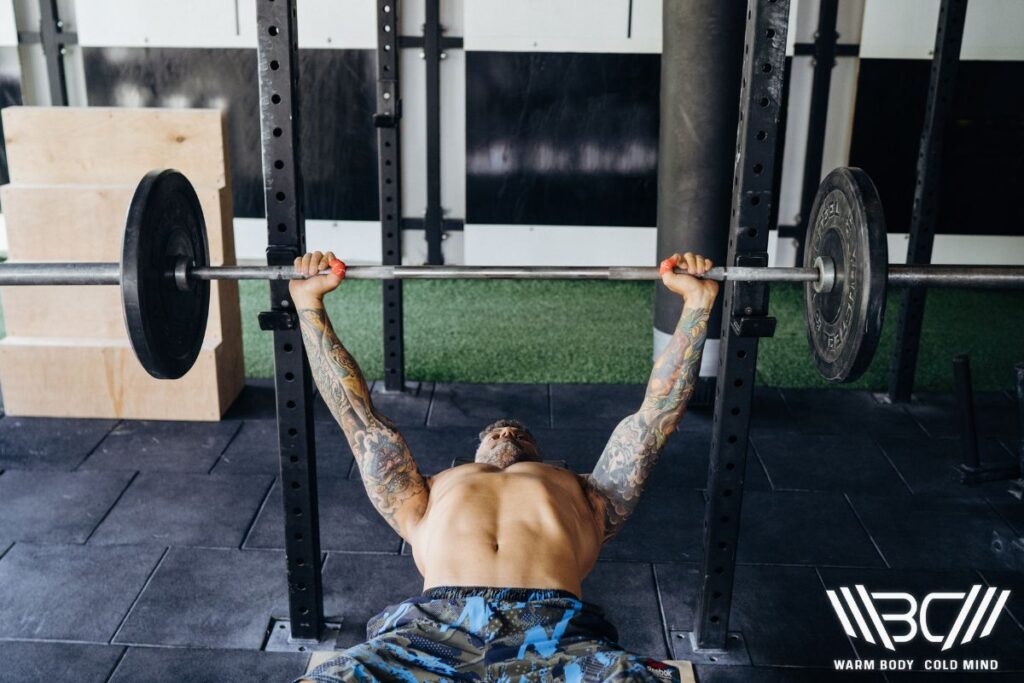
If you’re in good physical health, the moment you stop exercising, the wrist pain from benching should significantly decrease if not outright stop. If that’s the case, it’s safe to assume you’re not suffering from an outstanding wrist problem (at least not a concerning one).
So, when should you see a doctor if your wrist hurts after bench press? The simple answer is: when the pain carries the symptoms mentioned above, or it starts invading your daily life well post-exercise.
Simple Recommendations To Prevent Wrist Pain When Bench Pressing
1. Always Warm Up First
Warming up before any exercise is necessary to prepare your body and mind for physical activity. Dynamic warm-ups get the heart pumping, improve blood flow, and raise body temperature. Meanwhile incorporating light stretching reduces stiffness by gradually flexing and activating muscles, tendons, ligaments, and other connective tissue. Strains and sprains are especially common injuries when jumping into a workout on a cold body.
2. Train Realistically
We previously talked about overtraining, so now let’s round-up that point. Nobody should care “how much you can bench, bro,” and those who do are doing a disservice to themselves first. Focusing on proper exercise technique and hitting the right muscle groups is infinitely more important for “gains” than clumsily lifting 200 lbs.
Science has proven this, too, with studies noting no valuable difference in muscle and strength gain between people lifting 30-50% of their maximum and those training near maximum.
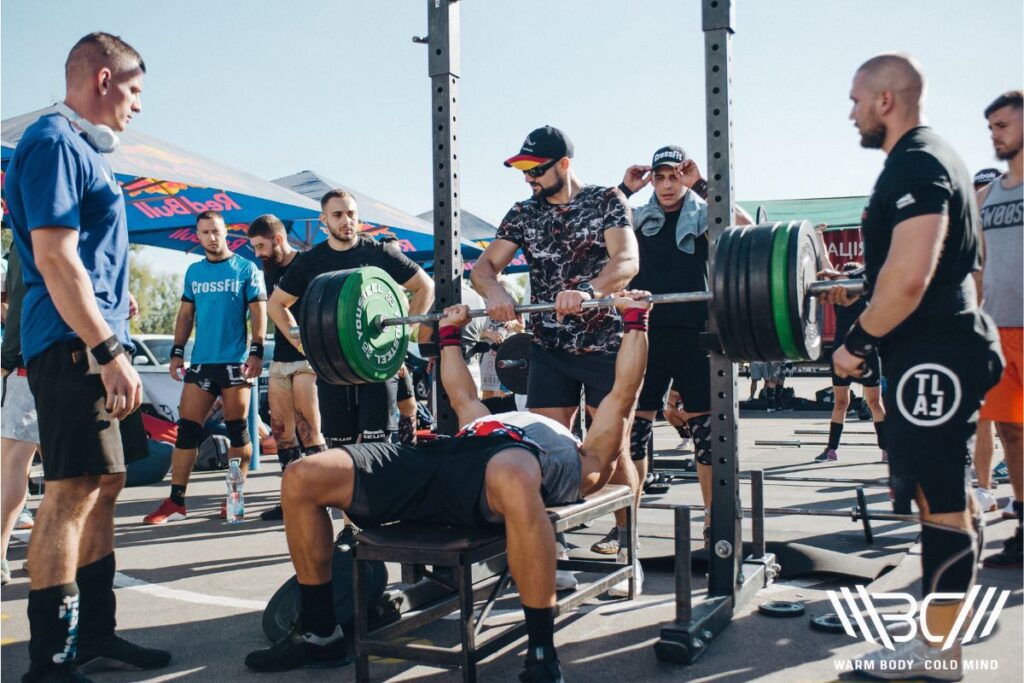
3. Use Wrist Wraps
Using wrist wraps is a great choice for anyone lifting heavy weights or dealing with constant wrist discomfort. By binding the wrist together and looping over the thumb, they reassure the wrist structure and prevent unwanted movement within the joint. This is especially beneficial for push-based exercises like bench presses.
But weightlifters are not the only ones who can benefit from better wrist integrity. Anybody can use them for exercises like cross-training, calisthenics, gymnastics, racket sports, or daily activities like gardening, typing, or playing instruments.
4. Find Your Ideal Grip
If your wrist hurts when benching, there’s a good chance you’re gripping the barbell incorrectly relative to your size, causing unnecessary strain. The best bench press grip width is approximately 1.6-2 times our shoulder width, with elbows spread between 45-75 degrees relative to your ability to keep the wrist in a neutral position. More on this topic can be learned here.
We Recommend The Warm Body Cold Mind Wrist Wraps
Warm Body Cold Mind products are built on decades of professional experience. The mastermind behind these wrist wraps, former Olympic weightlifter Oleksiy Torokhtiy, put first-hand competitive experience at the highest level into creating these. We made them with 100% natural cotton material to ensure a comfortable and soft feel.

Where other wrist wraps typically tear, we made sure to add extra layers of stitching, so you can use these even under intense exercise. The standardized sizing of 3 inches in width and 30 inches in length will provide a universally snug fit. The design is unisex with six color options, and we kept the price competitive. Each purchase comes in pairs.
Methods of Treating Wrist Pain After Bench Press
By this point, you should have a pretty good grasp of common problems. Now, here are some known and widely employed treatments for wrist pain from benching:
1. R.I.C.E Method
The R.I.C.E method is a popular way to deal with mild, self-repairing injuries at home. The name is an acronym for rest, ice, compression, and elevation. The idea is simple:
- Rest: Avoiding physical activities that aggravate the pain. The amount of rest will of course vary based on injury type
- Ice: Applying ice to the affected area to reduce swelling and numb the pain. Recommended applications are roughly 15-20 mins every 2-3 hours.
- Compression: Applying pressure to the affected area can help control the swelling and heat the muscle. Methods usually involve tight bandaging, wearing a wrist wrap, or wrist brace depending on the pain location.
- Elevation: Keeping the wrist above heart level to minimize swelling and reduce the acclimation of tissue fluid.
2. Taking Medicine
Many people’s first reaction to experiencing elongated or excruciating pain is taking painkillers. There are plenty of over-the-counter pain relievers such as ibuprofen or acetaminophen. What’s important though is carefully following recommended dosages.
Additionally, while medicine can numb the pain, keep in mind that this is only a trick on your brain. Painkillers affect pain transmission by blocking it out, but they don’t have healing properties. They are there to bridge the gap to the doctor more easily, not skip out on the checkup altogether.
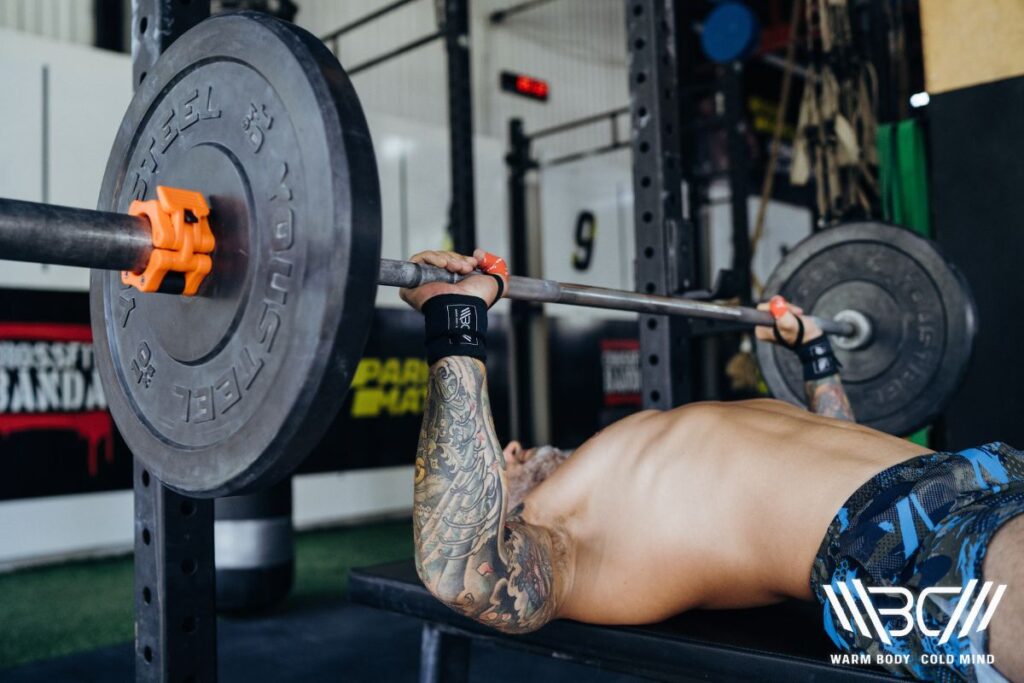
3. Visiting A Medical Professional
All of the above-mentioned methods are pretty self-explanatory and easy to employ at home. While that may be the case, the importance of proper diagnosis can’t be stressed enough. Improper treatment can delay the recovery process and potentially worsen the situation. Only a medical professional, such as a doctor or orthopedist, can provide accurate diagnosis and assign treatment.
FAQ
Should I Wear Wrist Straps When Benching?
First, it’s important to understand that wrist straps and wrist wraps aren’t the same thing. Wrist wraps provide support by basically binding the wrist structure. This can be helpful for exercises that rely on pushing for momentum, such as benching.
Meanwhile, wrist straps are meant for use during pull exercises by redistributing some of the weight from your palms onto your hand. If you want to add assistance to your hand anatomy when benching, what you want to wear is wrist wraps, not straps.
How Do I Fix Wrist Pain From Bench Press?
To fix wrist pain from bench press, first, you need to identify the cause. It could be that you’re simply gripping wrong, which is easy to fix through practice and prioritizing technique. If you feel wrist pain during bench press attempts specifically, but otherwise feel fine, you might be overtraining for your current strength level.
Consider using lower weights or doing fewer reps/sets to assess your situation. If the pain is persistent, especially well after you’re done exercising, you might have an injury or condition that must be examined by a professional.
How Do I Stop My Wrists From Bending When Benching?
A typical barbell or dumbbell used for benching has a standardized size. Meanwhile, we all have different hand shapes and sizes. If your wrists are bending during benching, you should experiment with grip types and grip width until you find what’s comfortable. Assuming you’re employing proper bench technique and still bending your wrist when benching, the only thing left to do is use less weight.
Should I Use The Bulldog Grip Bench Press?
The Bulldog grip is a bench press grip variation that’s becoming more popular. It’s inspired by Bulldogs, whose paws naturally turn slightly inward. The idea is to rotate your wrists inward. This way, the barbell sits on your thumb muscles, which are elongated and cover a significant portion of your wrist from the inner palm side.
This effectively provides more surface area for the barbell to rest upon. But, be aware that it might be challenging to wrap your fingers around the barbell, affecting your grip strength and balance. It’s not for everyone, but it’s worth a try.
Conclusion
Now you’re better equipped to address bench press wrist pain. Wrist pain can come from a variety of factors, both lifestyle and medical, and take up various forms. Common wrist pain when benching stems from fractures, strains, and sprains.
Assuming proper medical advice was received, most of these issues are fairly easy to home treat, but they might require time and rest. Prevention through proper exercise techniques, using assistance tools like wrist wraps, and training within your strength level is also important.
We’d love to hear from you as well. How often do you bench press? Also, what’s your favorite method of benching? Leave a comment letting us know and remember to give us a follow on social media for more fitness content.
References:
- Alex Tang, Matthew Varacallo, “Anatomy, Shoulder and Upper Limb, Hand Carpal Bones,” StatPearls (Treasure Island, FL: StatPearls Publishing, 2023)
- “Anatomy of the Hand and Wrist”, Cleveland Clinic https://my.clevelandclinic.org/health/body/25060-anatomy-of-the-hand-and-wrist (accessed Dec. 18, 2023)
- “Bone Fractures”, Cleveland Clinic https://my.clevelandclinic.org/health/diseases/15241-bone-fractures (accessed Dec. 18, 2023)
- John W. Karl, Patrick R. Olson, Melvin P. Rosenwasser, “The Epidemiology of Upper Extremity Fractures in the United States, 2009,” Journal of Orthopaedic Trauma vol. 29, no. 8 (2015), 242-244
- Loree L. Wagner, Sharon A. Evans, Joseph P. Weir, Terry J. Housh, Glen O. Johnson, “The Effects of Grip Width on Bench Press Performance,” International Journal of Sports Biomechanics 8 (1992), 1-10
- “Radius”, Physiopedia https://www.physio-pedia.com/Radius (accessed Dec. 18, 2023)
- “Repetitive Strain Injuries: Wrist Pain At Work”, Physio Central (Body Science) https://physio-central.com/blogs/articles/repetitive-strain-injuries-wrist-pain-at-work (accessed Dec. 18, 2023)
- Robert Morton, Sara Oikawa, Christopher Wavell, Nicole Mazara, Chris McGlory, Joe Quadrilatero, Brittany Baechler, Steven Baker, Stuart Phillips, “Neither load nor systemic hormones determine resistance training-mediated hypertrophy or strength gains in resistance-trained young men,” Journal of Applied Physiology vol. 121, no. 1 (2016), 129-138
- “Sprained Wrist Injury: Symptoms, Treatment, and Recovery,” WebMD (medically reviewed by Ross Brakeville, DPT) https://www.webmd.com/fitness-exercise/wrist-sprain (accessed Dec. 18, 2023)
- “Strains”, MedlinePlus (Bethesda, MD: National Library of Medicine US, 2023)
- “Ulna”, Physiopedia https://www.physio-pedia.com/Ulna (accessed Dec. 18, 2023)
- “What are ligaments?” Informed Health (Cologne, Germany, Institute for Quality and Efficiency in Health Care, 2018)
- “Wrist Sprain”, Physiopedia https://www.physio-pedia.com/Wrist_Sprain (accessed Dec. 18, 2023)
Author: Sergii Putsov
PhD in Sport Science, Olympic weightlifting, Strength & Conditioning coach and fitness expert
Sergii Putsov is a professional weightlifter with over 20 years of experience and multiple national medals. He was a member of the National weightlifting team, competing in the 94 kg weight class. Sergii holds a master’s degree in Olympic & Professional Sport Training and a Ph.D. in Sport Science. After his athletic career, Sergii transitioned into coaching and is now responsible for designing training programs, writing blog articles, providing live commentary for international weightlifting competitions, and hosting sport and fitness seminars worldwide.

